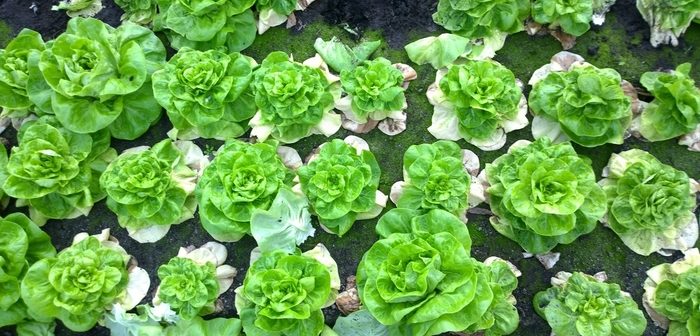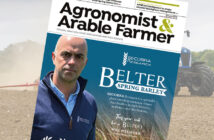An outbreak of an aggressive disease has been reported in UK lettuce crops for the first time and growers are being urged to look out for symptoms to get diagnosis early.
Lettuce Fusarium wilt has previously been found in mainland Europe, but the identification of this strain of the disease in Lancashire, in October this year, was the first time it has been confirmed in the UK.
The pathogen was identified as Race 4, which is a particularly aggressive strain with no known treatments or resistant varieties currently available.
In The Netherlands, growers are having to move production to new, uninfested glasshouses, or to only grow lettuce in the winter in cooler temperatures. Protected and field-grown lettuce crops are worth £142.7m* annually to the UK economy.
John Jackson, managing director at Seven Oaks Nurseries, said: “Glasshouse lettuce growers are extremely concerned about the outbreak and their future as lettuce growers. In 40 years of growing lettuce, I have never had a disease that could not be controlled by chemical application, soil sterilization and environmental control.
“If the disease spreads significantly, we may be in a situation, as in Holland, where lettuce cannot be grown in the soil. This would put many growers in a very difficult situation, looking for alternative crops, most of which would need significant capital expenditure at a time when margins are already tight.”
AHDB Horticulture has contracted University of Warwick to deliver a technical review to compile detailed information on management options to help minimise the impact on the UK lettuce industry. The full report will be published in early February 2018, but information will be shared with industry as the review proceeds.
Jon Knight, head of crop health and protection at AHDB, said: “Despite the strict rules in the UK regarding quarantine and sourcing of plants from other countries to keep the probability of new threats coming in as low as possible, unfortunately the Fusarium wilt has still found a way through.
“We will be collaborating with experts in countries where the disease is already present to collate all relevant information about how to prevent the disease and what control options are available. We will be communicating this to the UK industry as a matter of urgency.”
Kim Parker, crop protection scientist at AHDB, said: “The control of this disease is particularly difficult as spores survive for a long time in soil and crop debris and there are no effective plant protection products, no available resistant varieties and soil sterilisation has limited effect.
“We are therefore stressing that avoidance is the best strategy and urge growers to review their hygiene measures on both the nursery and with their plant propagator to avoid the disease getting on to their sites.”
Growers who suspect lettuce Fusarium wilt in their crops should send samples for diagnosis. As part of an AHDB project, Dr John Clarkson, at University of Warwick, will accept samples for free testing. Visit horticulture.ahdb.org.uk/lettuce-fusarium-wilt-and-root-rot for further information.
An event will also be held in Lancashire on 14 December 2017, where ADAS Associate Plant Pathologist Tim O’Neill will be presenting on ‘Practical measures to reduce the risk and impact of lettuce Fusarium wilt – utilising knowledge of other Fusarium wilt diseases’.
To book visit: horticulture.ahdb.org.uk/event/lettuce-fusarium-wilt-technical-workshop




